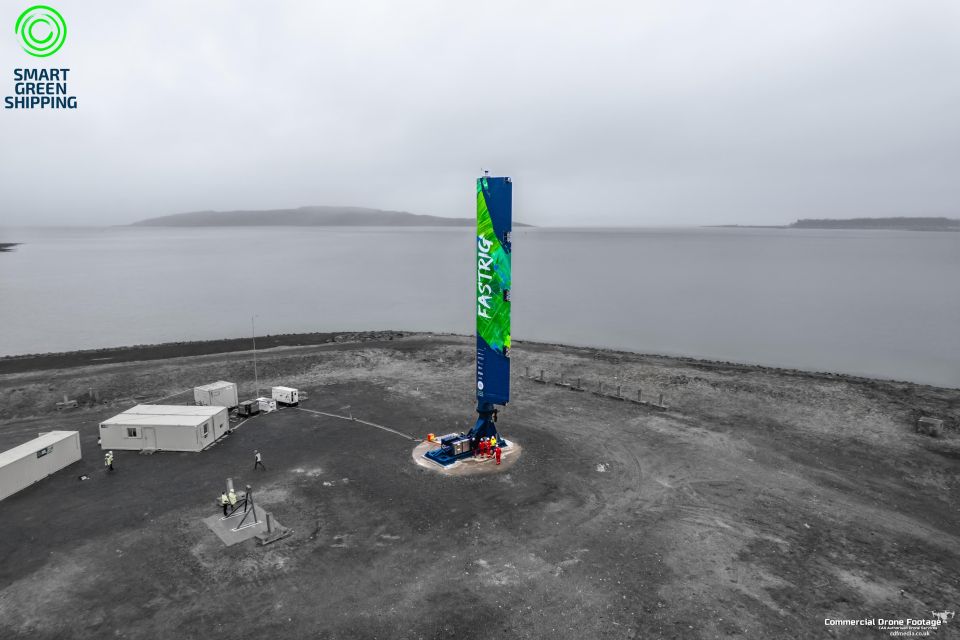Smart Green Shipping has commenced on-land testing of FastRig: a robust aluminium wingsail that harnesses wind power to deliver thrust to a ship. The recyclable, retractable, autonomous wingsail is said to reduce fuel emissions by up to thirty per cent.
FastRig has been developed collaboratively with input from shipowners and cargo owners. The first FastRig was raised on 14 March with the financial support of MOL Dry Bulk, Scottish Enterprise and private investors. Smart Green Shipping collaborated with world leading naval architects Humphreys Yacht Design, who developed the design of FastRig. Argo Engineering was responsible for translating the high performance design into practical, affordable construction engineering.
FastRig will undergo its on-land tests at Hunterston PARC in Scotland before commencing on-ship trials later this year.
Also read: The winds of change: One zero-emission dilemma for shipping solved?
‘Wind power now key part of the emission reduction conversation’
‘Over the past year, wind power has finally become a key part of the emission reduction conversation in the shipping industry as the need to decarbonise to remain compliant is embraced,’ says Diane Gilpin, founder and CEO of Smart Green Shipping. ‘Wind is the obvious solution – it’s abundant, freely and exclusively available to any ship equipped to harness it. Unlike other greening solutions, wind-assist saves money.’
She adds: ‘This next phase for FastRig, where it undergoes extensive on-land testing, is crucial to not only ensure its safety and reliability, but allows seafarers and shipowners the chance to actually get up close, give it a go and feed in to our ongoing design development. Seeing this 20-metre test and demonstration FastRig raised for the first time represents the culmination of a lot of hard work across the entire shipping ecosystem […]. But this is just the beginning: we’re developing larger FastRigs, integrated weather routing software and frictionless wind-as-a-service offerings for our customers.’
Also read: Government funded Norsepower Rotor Sail to be fitted on cement carrier
Quick and easy to install
FastRigs are extremely lightweight, which makes them quick and easy to install and uninstall, they don’t need invasive retrofit procedures that steal space from cargo holds and reduce payloads.

They retract in light winds to avoid creating additional wind resistance that would require more engine power, meaning they require less fuel. The wing sails also retract in heavy weather to improve safety, to manoeuvre in and out of ports, navigate under bridges and when loading and discharging cargoes. Digitally-enabled FastRigs “know” when they have to get out of the way.
Also read: AiP for performance prediction for wind-assisted ships
Thirty per cent emissions reduction
In 2018/19 a collaborative feasibility study that measured emissions saved by FastRigs on a panamax on its usual route and normal operating speed predicted the wingsail would save up to twenty per cent emissions per annum. This analysis was undertaken with the University of Southampton. The most recent FastRig design has been shown to reduce emissions by another ten per cent.
The next few months will see Smart Green Shipping perform on-land testing of the rig to assess key safety, operational, technical and mechanical systems, in collaboration with project partners. From April onwards, Smart Green Shipping will be hosting visitors at the test site in Hunterston, Scotland, to see FastRig in action.
Pictures by Smart Green Shipping.








